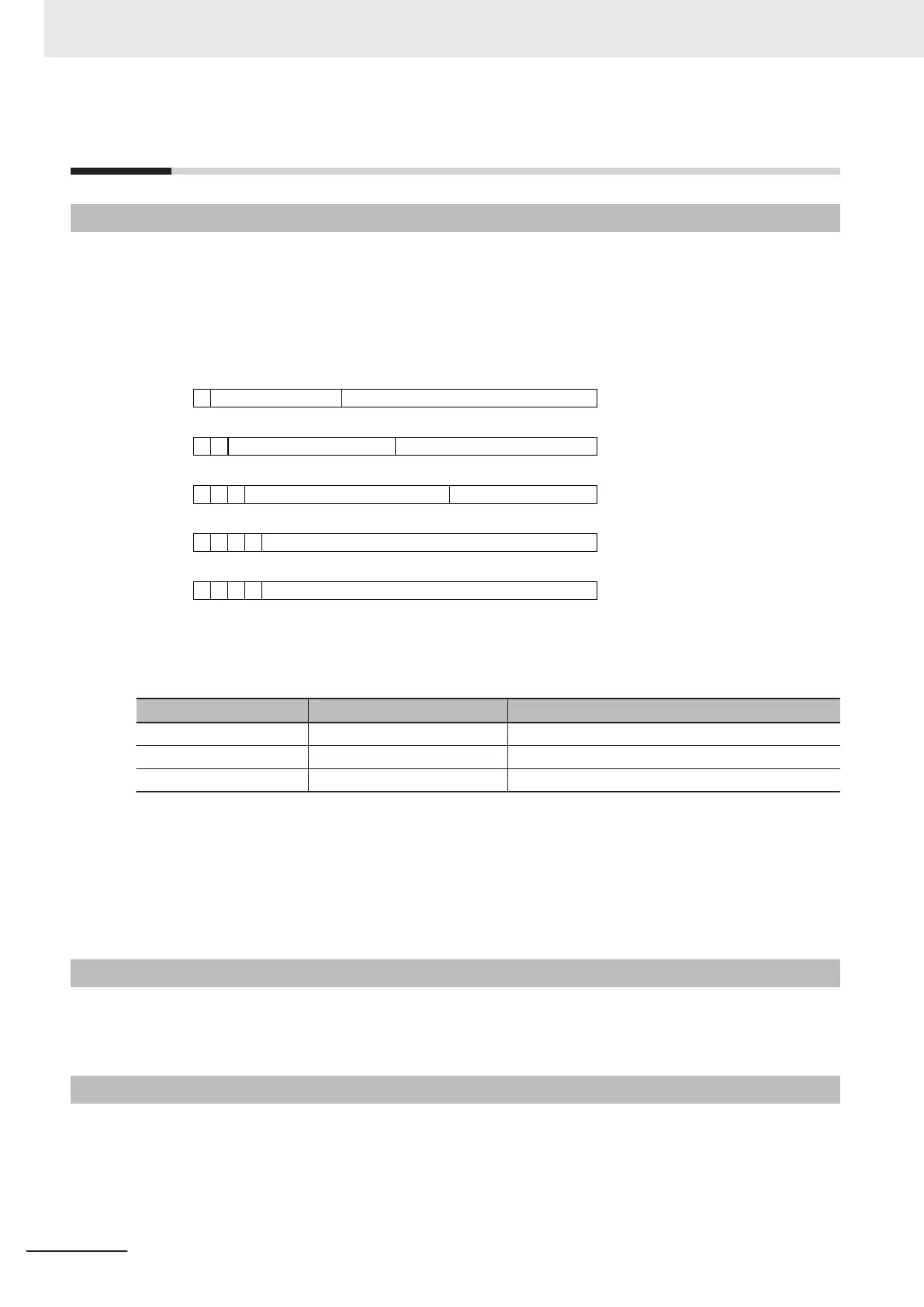4-1
IP Addresses
4-1-1
IP Address Configuration
IP addresses are made up of 32 bits of binary data that specify the network number (net ID) and host
number (host ID). The net ID is an address used for identifying a network. The host ID is an address
used for identifying a host (node).
IP addresses are divided into three classes, A, B, and C, so that the address system can be selected
according to the scale of the network. (Classes D and E are not used.)
(Can
not be used.)
(Cannot be used.)
Experimental address
Multicast address
Host ID (8 bits)
Network ID (21 bits)
Host ID (16 bits)
Network ID (14 bits)
Host ID (24 bits)
Network ID (7 bits)
Class E
Bit 31
Class D
Bit 31
Class C
Bit 31
Class B
Bit 31
Class A
Bit 31
0
23 0
1
15 0
1
7
0
0
1 0
1
0
1 1
1
0
1 1
0
1
The number of networks in each class and the number of hosts possible on the network differ accord-
ing to the class.
Class Number of networks Number of hosts
Class A Small 224−2 max. (16,777,214 max.)
Class B Medium 216−2 max. (65,534 max.)
Class C Large 28−2 max. (254 max.)
The 32 bits of binary data in an IP address are divided into four sections of eight bits each. IP address-
es are represented by the decimal equivalent of each of the four octets in the 32-bit address, each
separated by a period.
For example, the binary address 10000010 001
11010 00010001 00100000 would be represented as
130.58.17.32.
4-1-2
Allocating IP Addresses
You must assign IP addresses nodes so that each IP address is assigned only once in the network or
between several networks.
4-1-3
Subnet Mask
Operation and management of a network can become very difficult if too many nodes are connected
on a single network. In such a case it can be helpful to configure the system so that a single network is
divided up into several subnetworks. Internally the network can be treated as a number of subnet-
works, but from the outside it acts as a single network and uses only a single network ID.
4 Determining IP Addresses
4-2
NJ/NX-series CPU Unit Built-in EtherNet/IP Port User’s Manual (W506)

